Effective U10 soccer practice plans focus on developing foot coordination, speed, and fundamental skills through structured drills and small-sided games, ensuring engaging and skill-building sessions for young players.
Overview of U10 Soccer Development
U10 soccer development focuses on refining technical skills, enhancing tactical awareness, and fostering teamwork. Players at this stage typically have longer attention spans and can begin to understand more complex strategies. The emphasis is on improving dribbling, passing, and shooting while introducing basic defensive concepts. Structured practice plans incorporate small-sided games, such as 3v3 or 4v4, to promote decision-making and spatial awareness. This phase also highlights the importance of balancing skill development with fun, ensuring players remain engaged and motivated to improve. Goalkeeper training is introduced, focusing on basic handling and positioning.
Importance of Structured Practice Plans
Structured practice plans are essential for U10 soccer development, ensuring each session is organized, purposeful, and aligned with player growth. They help coaches focus on specific skills, such as dribbling and passing, while introducing tactical elements like small-sided games. A well-structured plan keeps players engaged, maximizing learning and fun. It also allows coaches to track progress and adapt sessions to meet the team’s needs. By incorporating warm-ups, drills, and game-like scenarios, structured plans create a balanced approach to skill development and teamwork, preparing young players for future challenges in the sport.
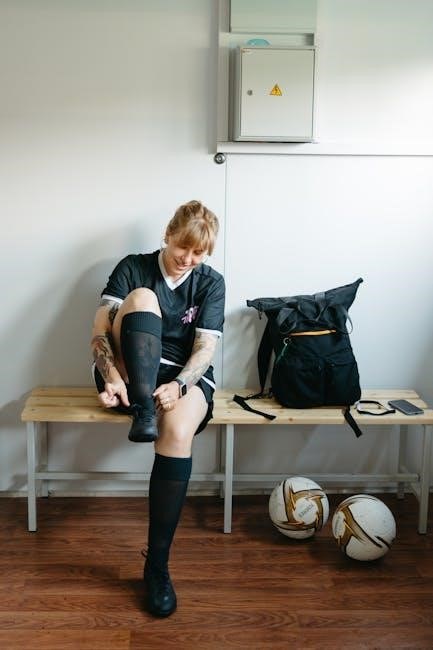
Typical Characteristics of U10 Players
U10 players show improved attention spans compared to younger age groups, with better ability to sequence thoughts and follow instructions. Their physical skills are still developing, requiring simplified drills to enhance coordination and technique. Emotionally, they enjoy playing with friends and respond well to positive encouragement and structured activities that combine learning with fun.
U10 players have longer attention spans compared to younger age groups, allowing for more complex instructions and drills. They demonstrate improved problem-solving skills and can sequence thoughts, enabling better understanding of game strategies. Coaches should use clear, concise language and incorporate visual demonstrations to enhance learning. Structured practices with varied activities keep players engaged, fostering both cognitive development and skill mastery. Positive reinforcement and age-appropriate challenges help maintain focus and motivation, ensuring a productive training environment. U10 players exhibit growing physical abilities, with improved coordination and balance, enabling better execution of soccer techniques. Their technical skills, such as dribbling, ball control, and passing, are refined through structured drills and repetitive practice. Drills focusing on foot coordination and speed, like those found in U10 practice plans, enhance agility and precision. Players at this age begin to master basic movements and can perform more complex maneuvers, making targeted skill development a priority in training sessions to build a strong foundation for future growth. At the U10 level, players are developing emotionally and socially, learning teamwork, communication, and sportsmanship. Practice plans should foster a positive environment where players feel supported and encouraged. Coaches play a key role in building confidence and resilience, helping players handle success and setbacks. Teamwork drills and small-sided games promote collaboration and mutual respect. Encouraging positive language and celebrating effort, not just results, supports emotional growth. Social interactions during practices help players develop friendships and a sense of belonging, making soccer a holistic experience beyond skill development. A U10 practice plan typically includes a warm-up, skill drills, small-sided games, and a cool-down. Each session should balance technical development, tactical awareness, and fun. A U10 soccer practice should begin with a 10-15 minute warm-up to prepare players physically and mentally. Start with light cardiovascular activities like jogging or high knees to increase heart rates. Dynamic stretching, such as leg swings and arm circles, helps improve flexibility and prevent injuries. Incorporate ball-related drills, like dribbling through cones or passing to teammates, to combine movement with skill work. End with fun, engaging games like tag or relays to maintain focus and excitement. This structured approach ensures players are ready for the practice ahead. Technical skill development is crucial for U10 players to build foundational abilities. Drills should focus on dribbling, passing, shooting, and ball control. Use cone mazes for weaving and changing direction, while wall passes and short volleys improve accuracy and footwork. Incorporate shooting drills with small targets to enhance precision. Small-sided games, like 2v2 or 3v3, allow players to apply skills in game-like situations. Rotate activities every 10-15 minutes to maintain engagement and ensure repetition for skill mastery. Coaches should demonstrate drills clearly and provide positive feedback to encourage improvement. Small-sided games are essential for developing tactical awareness in U10 players. Formats like 3v3 or 4v4 encourage decision-making, teamwork, and spatial awareness. These games simulate match scenarios, allowing players to practice identifying space, supporting teammates, and executing basic tactics. Coaches should guide players to recognize scoring opportunities and defensive positioning. Rotating players in different roles helps broaden their understanding of the game. Keep games fast-paced and fun to maintain engagement while fostering tactical development. This approach ensures players learn through active participation and repetition. The cool-down phase is vital for U10 players to gradually reduce their heart rates and prevent muscle soreness. Include static stretches for legs, hips, and lower back, holding each for 20-30 seconds. Use this time to review key lessons from the practice, emphasizing positive moments and areas for improvement. Keep the review concise to maintain young players’ attention. End with a motivational message or team cheer to foster camaraderie and enthusiasm for the next session. This structured approach ensures players leave practice feeling accomplished and prepared. Mastering core skills like dribbling, passing, shooting, and defense is fundamental for U10 players. These skills form the foundation for their soccer development and future success. Dribbling is a cornerstone skill for U10 players, focusing on ball control, coordination, and confidence. Coaches should emphasize proper technique, such as using the inside, outside, and sole of the foot. Drills like cone mazes, zig-zag runs, and figure-eight exercises help improve agility and precision. Incorporating small-sided games encourages players to apply dribbling skills in game-like situations. Repetition and positive feedback are key to building proficiency. Drills should be age-appropriate, fun, and progressively challenging to keep players engaged and motivated. Passing accuracy and speed are vital for U10 players to maintain possession and create scoring opportunities. Coaches should focus on proper ball striking techniques, such as using the inside and instep of the foot. Drills like short passing relays, wall passes, and partner grids help improve precision and timing. Incorporating game-like scenarios, such as 2v2 or 3v3 passing games, enhances decision-making and speed of play. Encourage players to vary pass distances and use different surfaces of the foot to develop versatility and control. Structured practices ensure consistent improvement in passing effectiveness. Shooting for power and precision is essential for U10 players to score goals effectively. Coaches should teach proper striking techniques, such as using the laces for power and the inside foot for accuracy; Drills like target shooting, penalty kicks, and breakaway exercises help develop both strength and aim. Emphasize balance, follow-through, and keeping the ankle locked for consistent shots. Incorporate game-like scenarios to practice shooting under pressure. Encourage players to use different surfaces of the foot and aim for specific areas of the goal to improve versatility and confidence in scoring situations. Fun, competitive drills keep players engaged and eager to improve. Defense fundamentals are crucial for U10 players to learn how to protect their goal and win the ball back effectively. Coaches should focus on proper stance, foot positioning, and body alignment when defending. Teach players to stay low, use their legs to block, and avoid lunging recklessly. Drills like 1v1 defensive scenarios, shadowing exercises, and small-sided games help improve spatial awareness and reaction time. Emphasize the importance of communication, staying organized, and pressuring the ball without overcommitting. Fun, competitive drills can make defense engaging while building confidence and teamwork skills. Goalkeeper training for U10 players focuses on basic handling, footwork, and positioning. Age-appropriate drills include ball control exercises, diving techniques, and game-like scenarios to build confidence and reflexes. Basic goalkeeping skills for U10 players include proper handling, stance, and movement. Start with grip techniques, footwork, and body positioning. Emphasize catching, throwing, and rolling the ball accurately. Introduce diving safely and effectively. Focus on building confidence and reaction time through simple, repetitive drills. Make sure players understand the importance of staying alert and communicating with teammates. Keep activities engaging and age-appropriate to ensure skill development and enjoyment. These foundational skills are essential for young goalkeepers to progress and excel in their role. Handling and footwork drills are crucial for developing U10 goalkeepers. Start with ball grip exercises and lateral shuffle drills to improve agility. Incorporate cone weave drills to enhance foot speed and coordination. Pair players for short passing exercises, focusing on accurate throws and catches. Add dynamic movements, such as carioca drills, to simulate game scenarios. Use small-sided games to integrate handling and footwork in realistic situations. Keep drills engaging and challenging to maintain focus and promote skill mastery. These exercises build the foundation for confident and capable goalkeepers. Positioning and reaction training focuses on developing a goalkeeper’s ability to read the game and respond quickly. Start with drills like “shot stopping” and “angle closure” to improve decision-making. Use visual cues, such as colored cones or flags, to simulate game scenarios. Incorporate reaction balls or uneven surfaces to enhance agility and quick reflexes; Add small-sided breakaway drills to practice positioning and diving techniques. Progress to dynamic exercises with moving attackers to mimic real-game situations. These drills build instinctive reactions and confident positioning, essential for young goalkeepers to excel. Small-sided games enhance skill development by increasing ball touches and decision-making opportunities. They foster teamwork, tactical awareness, and problem-solving in dynamic, engaging scenarios. 3v3 and 4v4 games are ideal for U10 players, maximizing ball touches and player involvement. These formats simplify the game, allowing young players to focus on basic tactics and decision-making. The smaller field size and reduced numbers enhance spatial awareness and encourage creativity. Coaches can adapt rules, such as no offside or simplified restarts, to suit developmental needs. These games also promote teamwork and problem-solving while maintaining high energy and engagement. Variations, like end zone scoring, can be added to challenge players and keep practices dynamic. End zone scoring drills are designed to create scoring opportunities in defined areas of the field. Players practice attacking and defending in small zones, fostering movement, decision-making, and teamwork. Variations include timed drills or specific scoring conditions to increase difficulty. These exercises enhance attacking skills, such as dribbling and passing, while teaching players to exploit defensive gaps. Coaches can adapt drills to focus on finishing techniques or quick transitions. This format keeps players engaged and improves their ability to create and capitalize on scoring chances in game-like situations. Progressions for increased difficulty involve modifying drills to challenge players as they develop. Start with simple tasks, then add complexity, such as defenders, time limits, or smaller playing areas. For example, a dribbling drill can progress from cones to defenders, testing ball control under pressure. Shooting drills might evolve from stationary shots to moving targets; These adjustments enhance problem-solving, speed of play, and adaptability. Coaches should tailor progressions to the team’s improvement, ensuring exercises remain engaging and appropriate for skill levels. This approach fosters continuous growth and prepares players for competitive scenarios. Discover structured, engaging, and age-appropriate practice plans tailored for U10 players, focusing on skill development, teamplay, and fun, adaptable to various coaching styles and team needs. This plan focuses on improving agility, balance, and quick movements. Begin with a dynamic warm-up using high knees, shuttle runs, and cone drills. Incorporate ladder drills for precise footwork and speed. Transition into small-sided games like 3v3 or 4v4 to apply skills in game-like situations. Conclude with a cool-down, including stretching and review of key movements. Emphasize positive reinforcement and gradual progression to build confidence and technical ability in young players. Focus on building ball control and teamwork through dynamic drills. Start with a warm-up featuring cone drills and figure-eight exercises to enhance dribbling precision. Progress to small-sided games like 2v2 or 3v3, emphasizing maintaining possession and smart decision-making. Incorporate relays and tag games to simulate game pressures. Conclude with a cool-down and review key techniques, encouraging creativity and confidence on the ball. Ensure drills are engaging and tailored to skill levels, fostering both individual growth and collaborative play. Begin with a dynamic warm-up focusing on leg swings and ball striking. Conduct stationary shooting drills, progressing to moving shots with dribbling approaches. Goalkeepers practice basic saves, footwork, and handling in a circuit format. Pair players for one-on-one shooting exercises, emphasizing accuracy and power. Conclude with a small-sided game (3v3 or 4v4) incorporating goalkeeping rotations. Ensure players receive feedback and encouragement, balancing skill development with fun and competitiveness. This session enhances both offensive and defensive capabilities in a structured yet engaging manner. Include clear objectives, drills, diagrams, and schedules. Ensure age-appropriate content, visual aids, and space for coach notes. Keep it organized, concise, and easy to follow digitally. A U10 soccer practice plan PDF should include clear session objectives, a structured timeline, warm-up routines, technical drills, small-sided games, and a cool-down; Add diagrams for drills, player positions, and field layouts. Include age-appropriate activities that focus on skill development, teamwork, and fun. Provide space for coaches to add notes or adjustments. Ensure the PDF is visually appealing with headers, subheadings, and bullet points for easy readability. Incorporate safety tips, hydration reminders, and nutritional advice for young players. Make it easy to print and share with the team. Use a clean, organized layout with clear headings and subheadings. Choose readable fonts like Arial or Helvetica in size 12-14. Utilize bullet points for drills and tables for timing. Include visuals like diagrams or images to illustrate drills. Use color coding for different sections to enhance readability. Ensure proper spacing between elements to avoid clutter. Add page numbers and a table of contents for easy navigation. Use margins and padding effectively for a professional look. Make sure the PDF is mobile-friendly and printable. Include QR codes for video references if needed. Keep the design consistent throughout the document for a polished appearance. Share the PDF with coaches, players, and parents via email or team communication apps. Ensure all stakeholders understand the practice structure and objectives. Assign roles to assistant coaches for smooth execution. Review the plan before each session to align expectations. Provide visual demonstrations of drills to clarify instructions. Encourage feedback from players and parents to refine the plan. Use a digital version for real-time updates and accessibility. Print copies for on-field reference if needed. Maintain consistency in implementing the plan to track progress effectively and adapt as needed. Explore online platforms, youth soccer association websites, and training books for comprehensive guides. Join coaching forums and download apps like Coach’s Companion for interactive drills and session planners. Youth soccer associations like US Youth Soccer and UEFA Grassroots provide detailed practice plans tailored for U10 teams. These resources often include drills for dribbling, passing, and shooting, as well as small-sided games to enhance decision-making. Many plans feature warm-ups, skill Development exercises, and cool-down activities. Coaches can access downloadable PDFs with diagrams and step-by-step instructions. These sessions are designed to be age-appropriate, focusing on technical, tactical, and physical development while keeping the game fun. They also emphasize teamwork and sportsmanship, making them ideal for coaches seeking structured and engaging practices. Effective U10 soccer practice plans include drills that focus on improving ball control, agility, and teamwork. Cone mazes and zigzag runs enhance dribbling precision and speed. Balloon drills, where players kick a balloon with their feet, promote light-hearted practice. Shooting ladders and small-sided games with targets develop accuracy. Passing relays and 1v1 challenges build confidence and competitive spirit. These exercises are designed to be engaging while fostering technical and tactical skills; Coaches can rotate drills to keep practices dynamic and ensure players stay motivated and focused throughout the session. Coaches can use skill assessment charts to monitor improvements in dribbling, passing, and shooting. Goal-setting worksheets help players track personal objectives. A Player Progress Tracker allows coaches to document advancements in skills, game performance, and confidence. A Development Milestone Checklist highlights achievements in core competencies; Additionally, a Parent-Coach Communication Log ensures transparency in a player’s growth. These tools provide measurable insights, helping coaches tailor practices and celebrate progress. Consistent use of these resources fosters accountability and encourages continuous improvement in young athletes. A well-structured U10 soccer practice plan fosters skill development, teamwork, and enjoyment. By focusing on age-appropriate drills, coaches create a fun, engaging environment that promotes holistic player growth; To maximize the effectiveness of U10 soccer practices, keep sessions engaging and age-appropriate. Use positive reinforcement to build confidence and encourage teamwork. Ensure drills are dynamic and varied to maintain attention. Focus on skill progression while allowing time for creativity and fun. Provide clear, concise instructions and demonstrate techniques visually. Incorporate small-sided games to apply skills in game-like situations. Always prioritize player safety and hydration. Adapt practices to meet the unique needs and energy levels of your team. Foster a positive environment where every player feels valued and motivated to improve. Encouraging player growth and fun is essential for U10 soccer development. Coaches should create an environment where creativity and experimentation are celebrated. Use positive language to build confidence and praise effort, not just results. Incorporate game-like scenarios that promote problem-solving and teamwork. Allow time for free play, where players can express themselves without strict instruction. Recognize individual progress and celebrate small victories to keep motivation high. Balancing skill development with enjoyment ensures players stay engaged and excited about the game.Attention Span and Cognitive Development
Physical and Technical Skill Levels
Emotional and Social Development
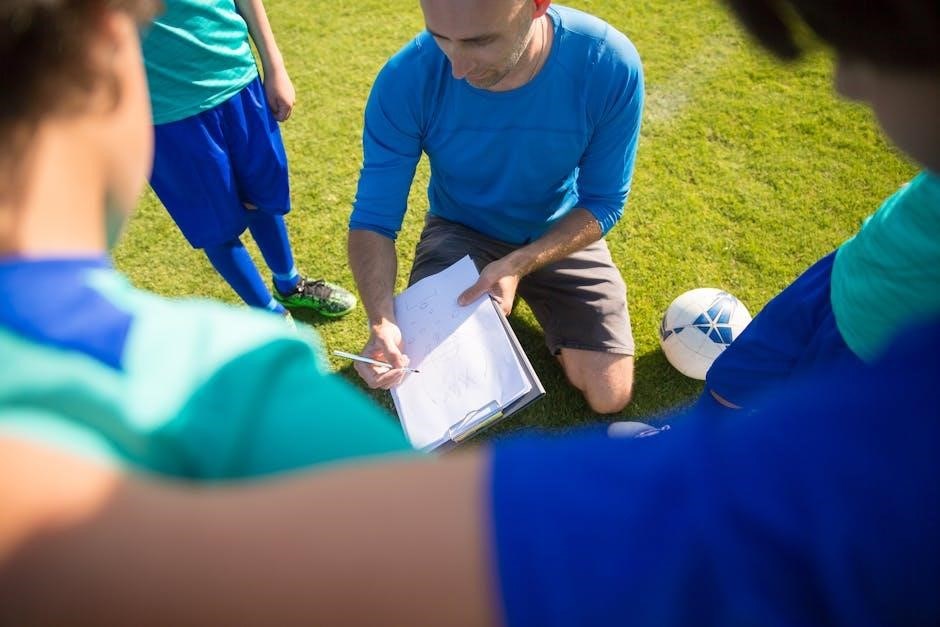
General Structure of a U10 Soccer Practice Plan
Warm-Up and Stretching Exercises
Technical Skill Development Drills
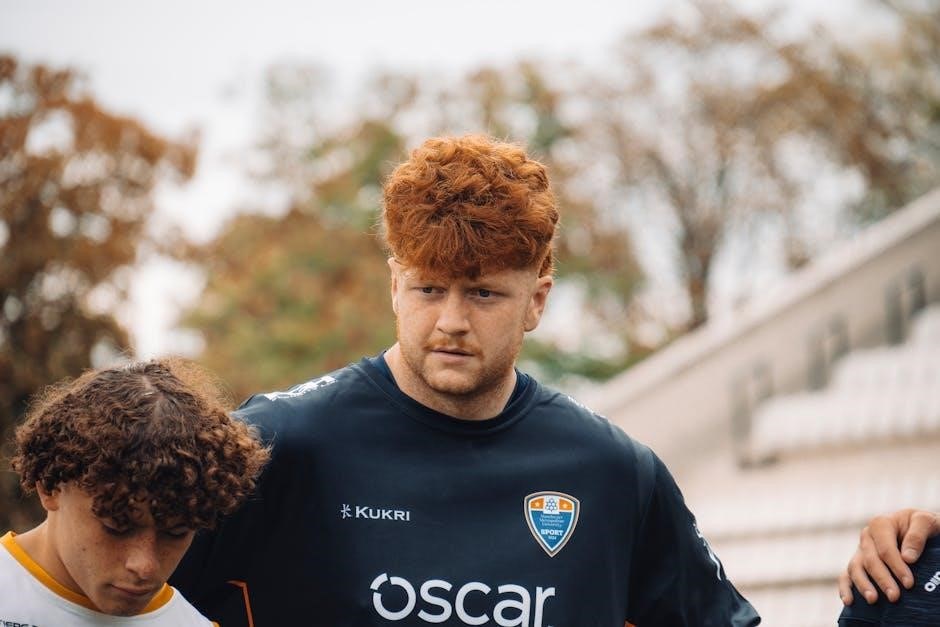
Small-Sided Games for Tactical Awareness
Cool-Down and Review
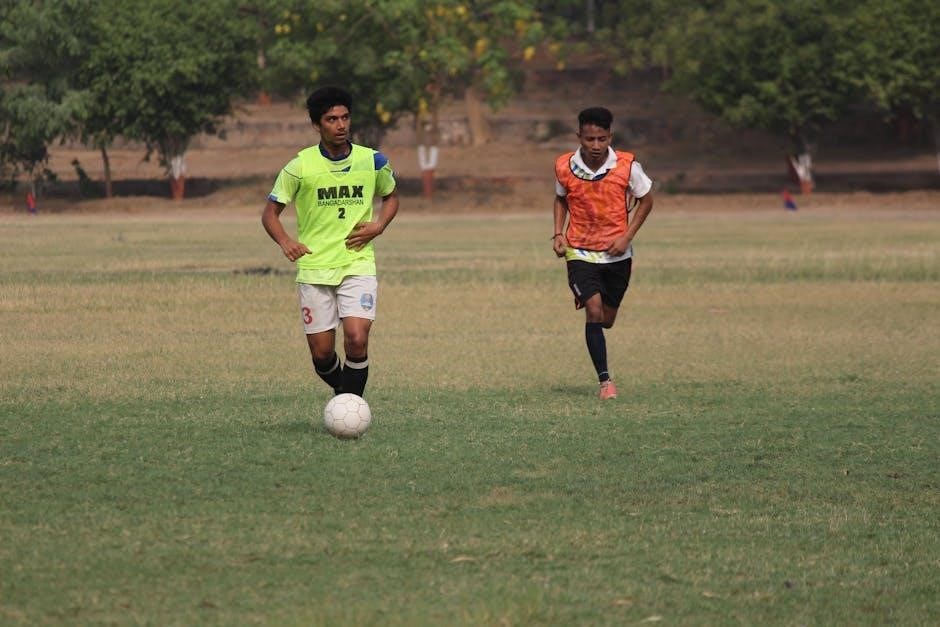
Core Skills for U10 Players
Dribbling Techniques and Drills
Passing Accuracy and Speed
Shooting for Power and Precision
Defense Fundamentals
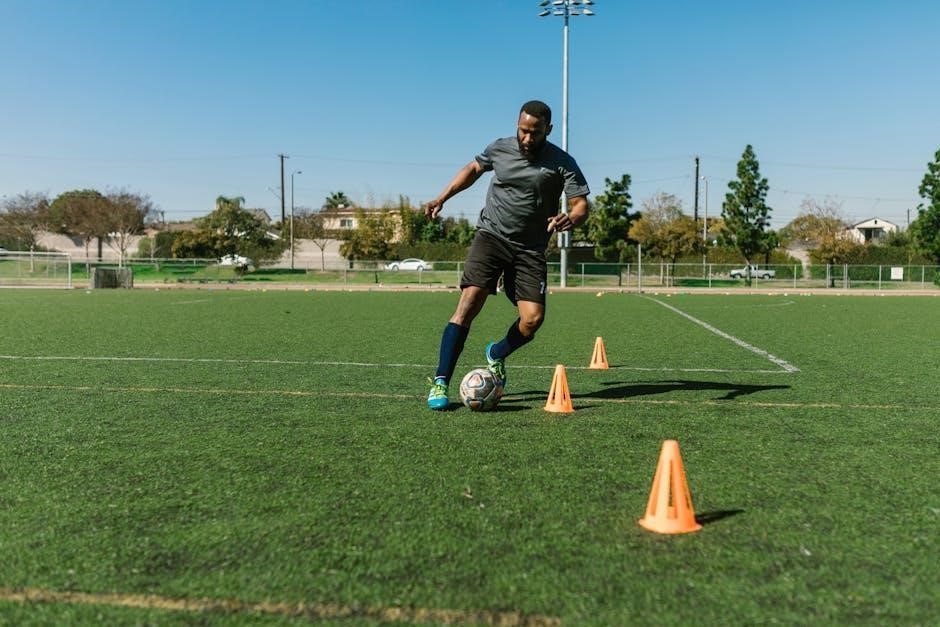
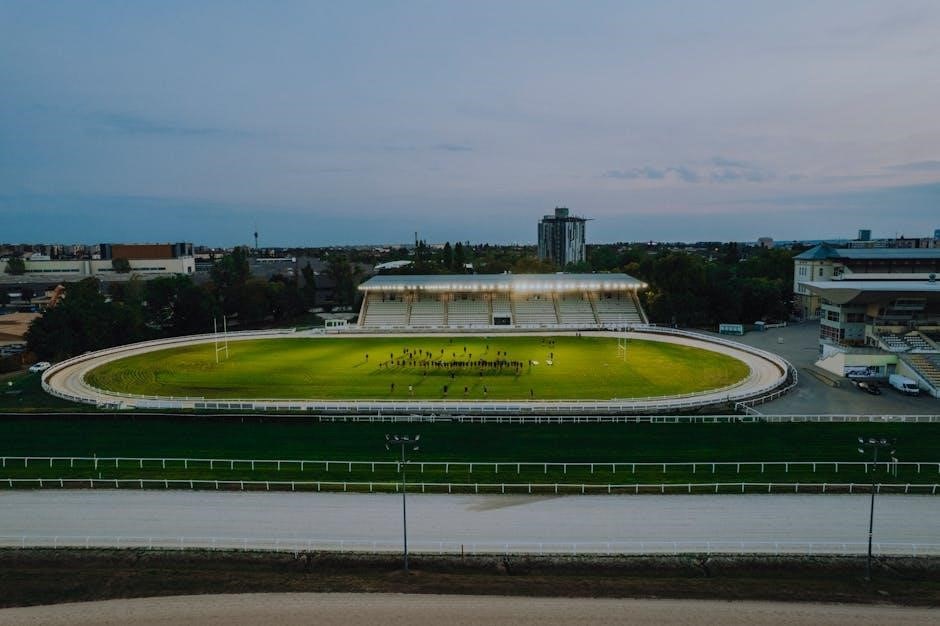
Goalkeeper Training for U10 Players
Basic Goalkeeping Skills
Handling and Footwork Drills
Positioning and Reaction Training
Small-Sided Games for U10 Practices
3v3 and 4v4 Game Formats
End Zone Scoring Drills
Progressions for Increased Difficulty
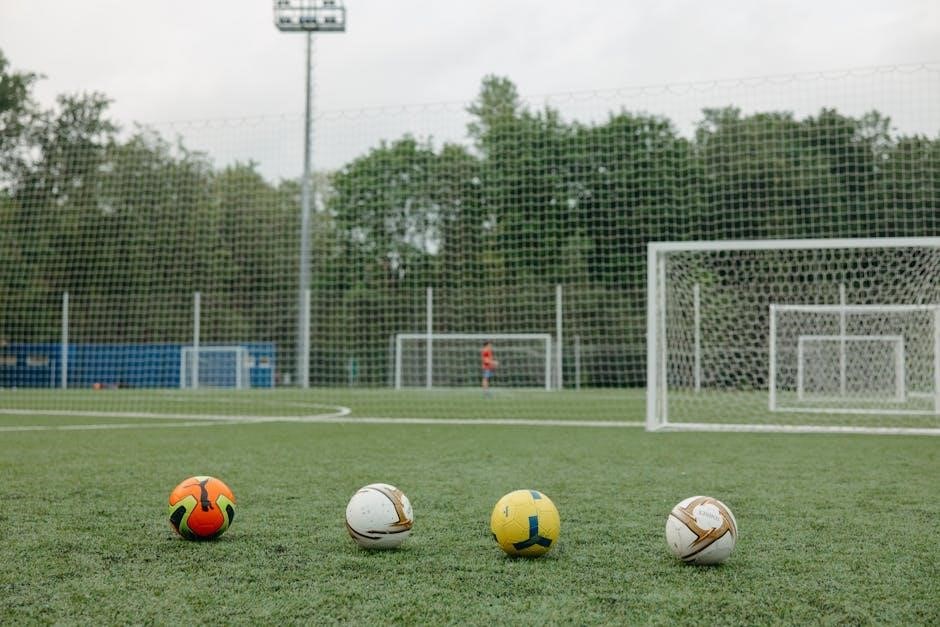
Practice Plan Examples
Sample Practice Plan for Foot Coordination and Speed
Lesson Plan for Dribbling and Possession
Session Plan for Shooting and Goalkeeping
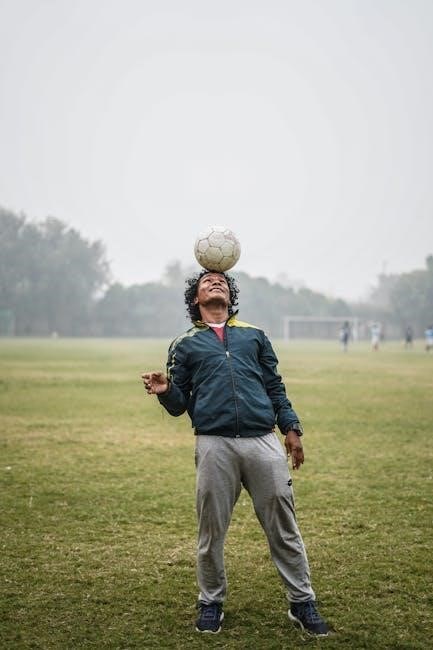
Creating a U10 Soccer Practice Plan PDF
Key Elements to Include
Design and Layout Tips
Sharing and Implementing the Plan
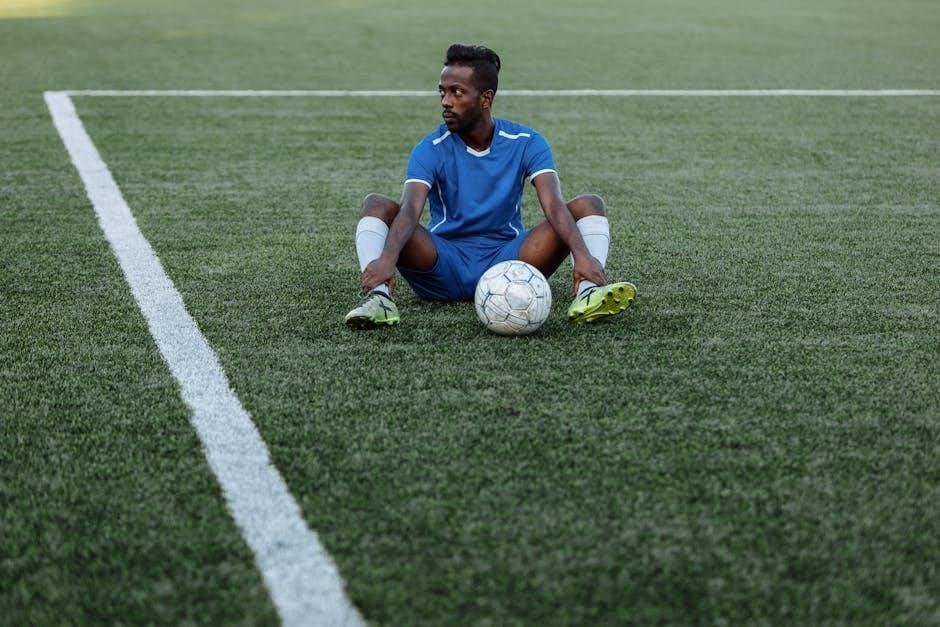
Additional Resources for Coaches
Sample Practice Sessions from Youth Soccer Associations
Drills and Exercises for Skill Development
Tools for Tracking Player Progress
Consistent practice and positive reinforcement help young athletes build confidence and a lifelong love for the game. Coaches should remain adaptable, ensuring each session is dynamic and meaningful.Final Tips for Effective U10 Practices
Encouraging Player Growth and Fun
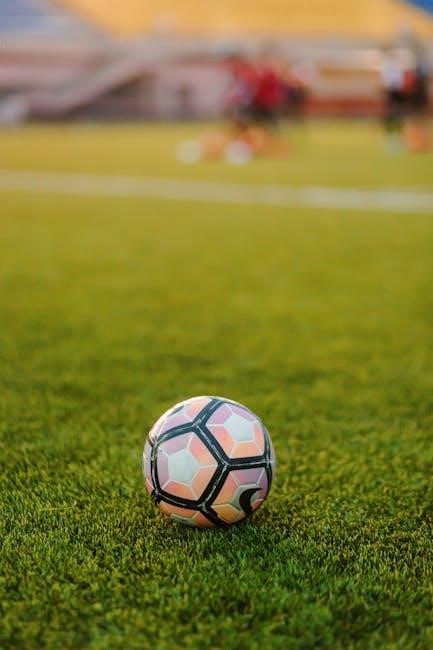
Be First to Comment